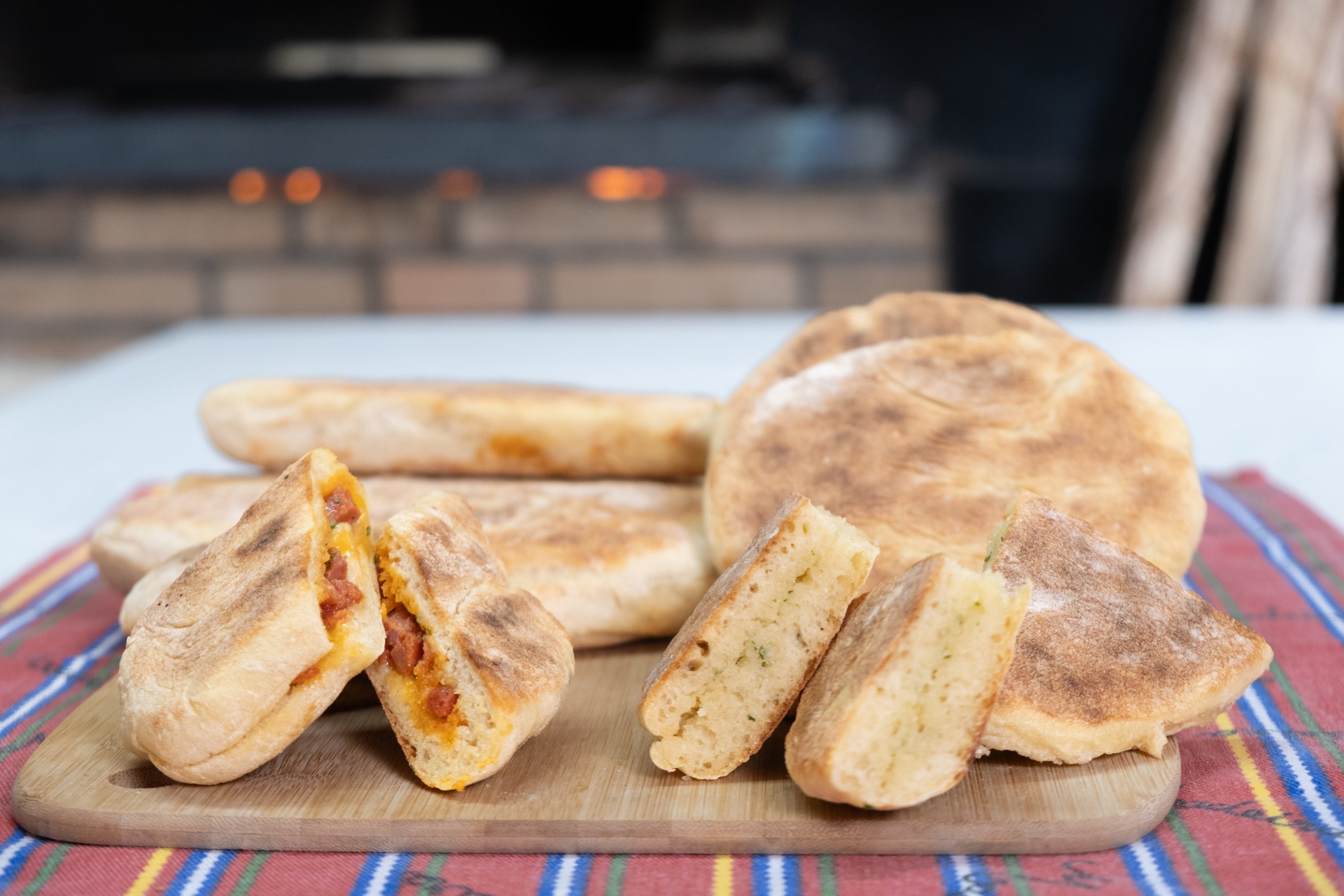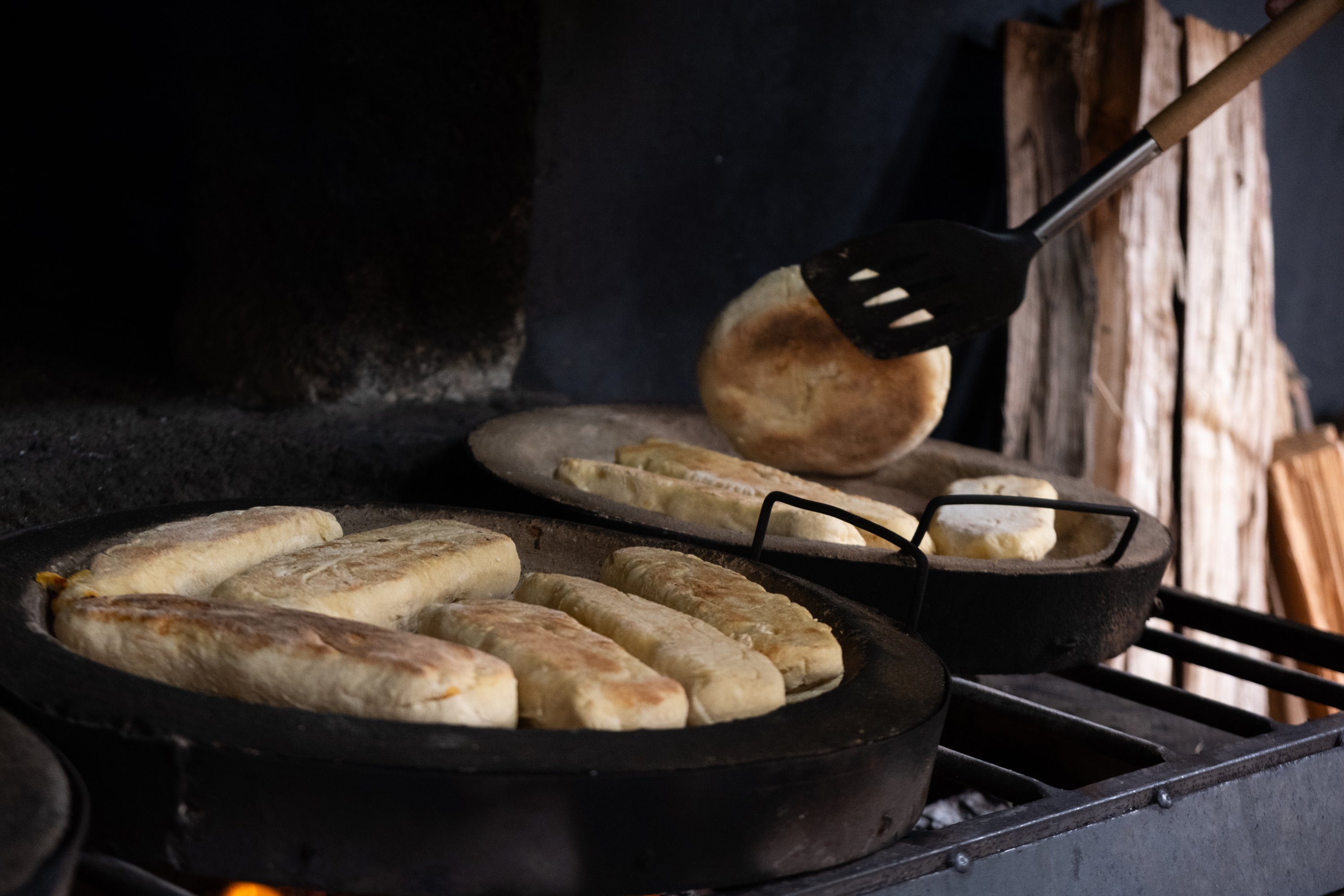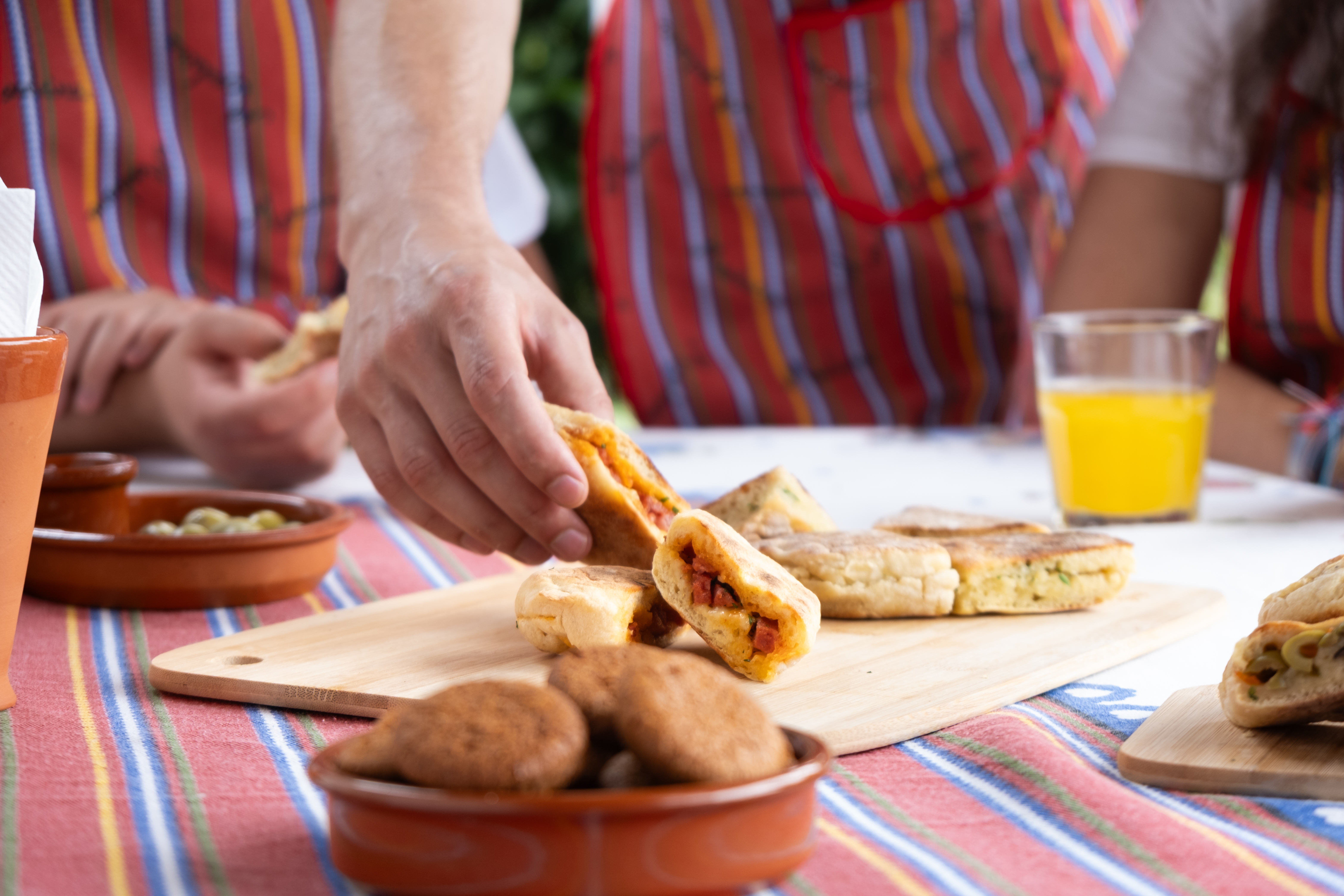The History of Bolo do Caco in Madeira Island
If you’ve visited Madeira, you’ve probably tasted Bolo do Caco, the island’s famous flatbread. Soft, slightly sweet, and often served with garlic butter, this bread is more than just a treat, it’s a delicious piece of Madeiran culture.

Origins of Bolo do Caco
The name “Bolo do Caco” means “cake of the slab” referring to the flat stone or iron slab traditionally used to cook it. Its history is both practical and fascinating.
In the 16th century, private ovens were heavily regulated. Many families could not build their own ovens and had to rely on communal ovens controlled by the king, the church, or local aristocracy, often paying for their use. To bake bread at home, resourceful Madeirans began using flat basalt slabs over open flames, creating what we now know as Bolo do Caco.
Over the years, this humble bread became a staple of Madeiran cuisine, loved by locals and visitors alike.

Traditional Ingredients and Preparation
Bolo do Caco is made with simple, natural ingredients: flour, sweet potato, water, salt and yeast.
The dough is shaped into discs and cooked on a flat caco or stone slab. Once baked, it’s traditionally served hot with garlic butter, but it’s also delicious with cheese, ham, or fresh fillings.
Bolo do Caco Today
Today, Bolo do Caco is everywhere in Madeira, from markets to cafés to family kitchens. While recipes may vary slightly, the essence remains: a warm, comforting bread that brings people together.

Why You Should Try It
Bolo do Caco is more than just bread, it’s a taste of Madeiran history and ingenuity. Every bite tells the story of the island’s people, their creativity, and their love of simple, delicious food.
If you visit Madeira, don’t leave without tasting Bolo do Caco. And for a truly memorable experience, you can join us at Casa da Nati on a workshop to learn how to make it yourself and enjoy it fresh from the slab. It’s a delicious way to bring a piece of Madeira home with you.